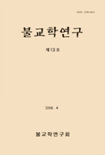- 영문명
- The Meaning of Chih-i's Yuan-Tun Chih-Kuan from the Upāya
- 발행기관
- 불교학연구회
- 저자명
- 김정희(Kim Jung-Hee)
- 간행물 정보
- 『불교학연구』제13호, 131~154쪽, 전체 24쪽
- 주제분류
- 인문학 > 불교학
- 파일형태
- 발행일자
- 2006.04.30

국문 초록
영문 초록
The aim of this paper is to clarify the meaning of Yuan-Tun Chih-Kuan set forth by Chih-i. Yuan-Tun Chih-Kuan is based on the theory of nonduality. This means Yuan-Tun Chih-Kuan cannot be compatible with up?ya as expedient means for reaching the real. By the way, Chih-i proposed religious rituals as up?ya for Yuan-Tun Chih-Kuan. This is controversial. Having the concerning in this problem, this paper clarified the meaning of up?ya from the meaning of miao[妙]
The meaning of miao consists of the relative and the absolute. In the relative, miao considers up?ya in relation to the real as the expedient means for reaching the real, and denies it. The absolute means that there is nothing which is relative. According to the absolute, miao considers up?ya is identical with the real. The absolute miao redefines up?ya as the real. If up?ya is identicl with the real, up?ya can be compatible with Yuan-Tun Chih-Kuan. The meaning of up?ya identical with the real is well described in the Lotus Sam?dhi.
The meaning of miao consists of the relative and the absolute. In the relative, miao considers up?ya in relation to the real as the expedient means for reaching the real, and denies it. The absolute means that there is nothing which is relative. According to the absolute, miao considers up?ya is identical with the real. The absolute miao redefines up?ya as the real. If up?ya is identicl with the real, up?ya can be compatible with Yuan-Tun Chih-Kuan. The meaning of up?ya identical with the real is well described in the Lotus Sam?dhi.
목차
Ⅰ. 들어가는 말
Ⅱ. 방편에 대한 지의의 이해
Ⅲ. 법화삼매에서의 방편의 의미
Ⅳ. 맺는말
영문초록
Ⅱ. 방편에 대한 지의의 이해
Ⅲ. 법화삼매에서의 방편의 의미
Ⅳ. 맺는말
영문초록
해당간행물 수록 논문
참고문헌
최근 이용한 논문
교보eBook 첫 방문을 환영 합니다!

신규가입 혜택 지급이 완료 되었습니다.
바로 사용 가능한 교보e캐시 1,000원 (유효기간 7일)
지금 바로 교보eBook의 다양한 콘텐츠를 이용해 보세요!


